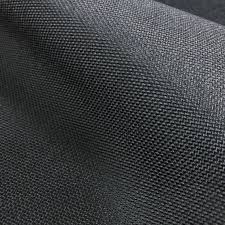Hey there, fellow adventurer! Ever found yourself overwhelmed by the sheer variety of backpacks out there? You’re not alone. One of the most crucial factors in choosing the best backpack is understanding the material it’s made of. From natural to synthetic, eco-friendly to specialty materials, each has its unique benefits and drawbacks. Let’s embark on this journey to discover what makes each type of backpack material tick, so you can find the perfect backpack material types for your needs.

Natural Materials
#1: Cotton Canvas
What is Cotton Canvas?
Cotton canvas is a heavy-duty backpack material made from woven cotton. It’s been around for centuries, known for its durability and rugged aesthetic. Think of those classic military and hiking backpacks – that’s cotton canvas for you.
Pros and Cons
Cotton canvas is incredibly tough and can handle a lot of wear and tear, making it a popular choice for backpacks. It ages beautifully, developing a unique patina over time. However, it’s heavier than many other backpack material types and isn’t naturally waterproof. You might need to treat it with wax or a waterproof spray to keep your belongings dry.
#2: Leather
What is Leather?
Leather is a natural material made from animal hides, typically cowhide. It’s processed and treated to create a strong, flexible, and stylish fabric used in high-end backpacks.
Pros and Cons
Leather is the epitome of durability and style. It’s long-lasting and looks better with age, acquiring a rich patina. However, leather backpacks can be quite heavy and are often more expensive. Plus, they require regular maintenance to keep them looking their best.
#3: Hemp
What is Hemp?
Hemp fabric is made from the fibers of the hemp plant. It’s one of the most eco-friendly materials available, as it requires little water and no pesticides to grow.
Pros and Cons
Hemp is incredibly strong and durable, making it a great choice for rugged backpacks. It’s also naturally resistant to UV light and mold. On the downside, hemp can be rough to the touch and might not offer the same smooth finish as other fabrics. It’s also typically more expensive than cotton canvas.

Synthetic Materials
#4: Nylon
What is Nylon?
Nylon is a synthetic polymer invented in the 1930s. It’s known for being lightweight, strong, and highly versatile, making it a favorite for outdoor gear and backpacks.
Pros and Cons
Nylon is incredibly durable and resistant to abrasions and tears. It’s also lightweight, making it perfect for hiking and travel backpacks. However, it can be less UV-resistant and might fade with prolonged sun exposure. Additionally, nylon isn’t as eco-friendly as natural fibers.
#5: Polyester
What is Polyester?
Polyester is another synthetic fiber, widely used in various types of fabric and known for its durability and resistance to stretching and shrinking.
Pros and Cons
Polyester is cost-effective and highly resistant to weather, meaning it won’t absorb water and dries quickly. It’s also quite durable. However, it’s not as strong as nylon and can be less comfortable against the skin. Like nylon, it’s not the most eco-friendly option.
#6: Polypropylene
What is Polypropylene?
Polypropylene is a type of plastic that’s often used in textiles for its light weight and resistance to chemicals and water.
Pros and Cons
Polypropylene is extremely light and resistant to water and chemicals, making it great for ultralight backpacks. However, it’s not as durable as nylon or polyester and can be more prone to damage from UV exposure.

Hybrid Materials
#7: Cordura
What is Cordura?
Cordura is a brand name for a collection of fabrics known for their durability and resistance to abrasions, tears, and scuffs. It’s usually made from a blend of nylon or polyester.
Pros and Cons
Cordura is incredibly tough and perfect for heavy-duty backpacks. It offers great resistance to abrasions and tears. However, it can be heavier and more expensive than other materials.
#8: Ripstop Fabric
What is Ripstop Fabric?
Ripstop fabric is a type of woven material that incorporates a reinforcing technique making it resistant to tearing and ripping. It’s typically made from nylon or polyester.
Pros and Cons
Ripstop is lightweight yet incredibly strong, perfect for outdoor and adventure backpacks. Its main drawback is that it can be more expensive than standard nylon or polyester fabrics.
#9: Dyneema
What is Dyneema?
Dyneema is an ultra-high-molecular-weight polyethylene known for being one of the strongest and lightest fibers in the world.
Pros and Cons
Dyneema offers unmatched strength-to-weight ratio, making it ideal for ultralight and high-performance backpacks. However, it’s also one of the most expensive materials, which can be a significant downside for budget-conscious buyers.
Eco-Friendly Materials
#10: Recycled Fabrics
What is Recycled Fabric?
Recycled fabrics are made from repurposed materials, like plastic bottles or discarded textiles, turned into new fibers.
Pros and Cons
Using recycled fabrics is a great way to reduce environmental impact. They offer similar durability to their virgin counterparts but with a smaller carbon footprint. However, the process can sometimes make these materials more expensive.
#11: Organic Cotton
What is Organic Cotton?
Organic cotton is grown without the use of synthetic pesticides or fertilizers, making it a more sustainable option compared to conventional cotton.
Pros and Cons
Organic cotton is soft, durable, and better for the environment. However, it can be pricier than regular cotton and still faces the same challenges regarding weight and water resistance.
#12: Pinatex
What is Pinatex?
Pinatex is an innovative fabric made from the fibers of pineapple leaves, offering a sustainable alternative to leather.
Pros and Cons
Pinatex is eco-friendly and provides a unique, leather-like texture. It’s also biodegradable. On the flip side, it’s relatively new and can be expensive, and might not yet offer the same durability as traditional leather.

Specialty Materials
#13: Kevlar
What is Kevlar?
Kevlar is a synthetic fiber known for its high tensile strength, often used in bulletproof vests and high-performance gear.
Pros and Cons
Kevlar is incredibly strong and resistant to cuts and abrasions. It’s perfect for tactical and protective backpacks. However, it’s also quite expensive and can be heavier than other materials.
#14: X-Pac
What is X-Pac?
X-Pac is a laminated fabric that combines multiple layers for exceptional durability, waterproofing, and lightweight performance.
Pros and Cons
X-Pac offers superior waterproofing and durability, ideal for extreme outdoor conditions. Its main downside is its high cost, which can be prohibitive for some users.
#15: Neoprene
What is Neoprene?
Neoprene is a synthetic rubber known for its flexibility, water resistance, and insulating properties, commonly used in wetsuits.
Pros and Cons
Neoprene provides excellent water resistance and thermal insulation, making it great for aquatic gear and protective cases. However, it’s not very breathable and can be quite heavy and bulky.
Conclusion
Choosing the best backpack material depends on your specific needs and preferences. From the rugged durability of cotton canvas and leather to the high-tech resilience of Dyneema and Kevlar, there’s a material out there for every adventure. Eco-conscious choices like recycled fabrics and organic cotton are making strides, offering sustainable alternatives without sacrificing performance. So, next time you’re in the market for a new backpack, remember – the right material makes all the difference.
FAQs
1. What is the best backpack material for durability?
Cordura and Kevlar are among the most durable materials, offering exceptional resistance to wear and tear.
2. Are recycled material backpacks as good as new materials?
Yes, recycled materials can offer comparable durability and performance while being more environmentally friendly.
3. Is neoprene waterproof?
Neoprene is highly water-resistant, making it a great choice for aquatic and protective gear.
4. What is neoprene made of?
Neoprene is made from the polymerization of chloroprene, resulting in a flexible, synthetic rubber.
5. What are backpacks made of?
Backpacks can be made from a variety of materials including cotton canvas, leather, nylon, polyester, Cordura, Dyneema, and even innovative eco-friendly materials like Pinatex and recycled fabrics.








